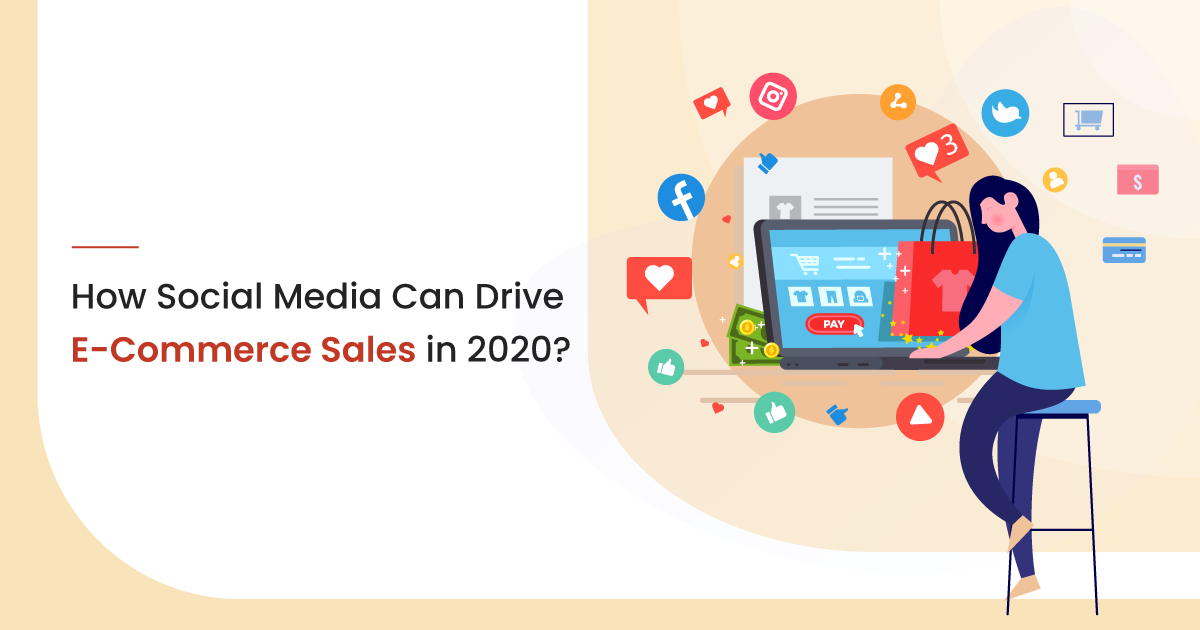Let it be known that the secret to your e-commerce channel’s future growth is social commerce. Most purchase pathways have plenty of unnecessary steps/protocols in the conversion process. Every step massively enhances the chances of your potential consumers abandoning their purchasing and deserting your portal forever.
Best Social Media Marketing Companies in 2020
The problem is with modern sellers/merchants’ dependence on tech and software solutions. Everyone is too engrossed in gamifying the procedure and generating sales through fast, cheat tactics rather than solving real consumer issues.
- The smartest e-commerce brands are examining new ways to use technology for creating a better customer experience. There are over 1.50 billion daily, active Facebook users. 60% of Instagram users attest to buying new products on the platform.
- 34% of online shoppers say they are prone to making a purchase from a reliable social media network like Instagram, Pinterest, Facebook, Snapchat or Twitter.
- Social media messenger sales are increasingly outdoing email, the current champion of ROI.
- Social commerce differs from normal social media marketing because you don’t redirect users/followers to an online store, but provide them with the ability to checkout within the network/site they are using at that time.
- With social commerce, brands can effectively use the one-click purchase mechanism on multiple social media networks.
Social Commerce Trends 2020
Social media continues to provide scopes for brands to connect with customers in interest, new ways, and across a range of platforms. Almost 90% of e-commerce shoppers say that social media helps in making shopping decisions. 1 out 4 businesses are selling products/services through Facebook.
- The three prominent social commerce trends are mobility, visuals, and trust. Social media websites are predominantly mobile-savvy, and people expect a digital experience, which enables them to comfortably browse and purchase things on their mobile devices.
- Brands aspiring to make an impact on the platforms must embrace and use ‘Instagrammability,’ a strong trend that’s authentic, relatable and visually-propelled.
- A rise in inbuilt e-commerce projects is visible. As social commerce keeps building momentum, noted platforms like Snapchat and Instagram are seeking to increase their e-commerce bandwidth.
- Instagram launched its new e-commerce checkout utility for tackling the current hurdles of delivering an in-app and end-to-end e-commerce experience.
- Features like “Checkout” allows Instagram followers to complete a purchase without leaving the app. You can save your purchase details for future payments.
- The second trend is that social commerce is expanding beyond set channels.
- Influencer marketing will remain persuasive enough. Brands seeking to excel in this field must leverage existing/new concords with influencers to bolster reach and affinity with businesses.
Also, Read: 11 Best eCommerce Marketing Strategies to Peak Sales in Holiday Season
Driving Sales and Profits
The immense viability and influence of social media have built a massive potential audience for social media shopping. Global internet adherents spend an average of 143 minutes every day on social media, which is up from 90-100 minutes in 2012.
- Recent statistics have made social media a key player in consumers’ buying habits. 36% of internet users in the US say social networks have emerged as crucial information sources to make product choices.
- Consumers are increasingly using social media to learn more about brands and products, and seek inspiration and resources.
- In the past few years, you’ve many platforms eliminating the friction of purchasing an item elsewhere after finding it on social media.
- The addition of digital wallets and buy buttons, for example, have bolstered user-experience, helping you to make direct and seamless purchases.
- One look at the top platforms thriving in the social commerce realm will help you analyze the imminent future of each brand in that space.
- You have almost all the big names in this group. There is Amazon, Snap, Walmart, Nike, Poshmark, L’Oreal, Samsung, Facebook, Calibra, and many others.
The Functional Aspect
You need to understand that unlike offline shopping, e-commerce doesn’t have a social disposition. Social commerce is still a nascent market, encompassing a wide array of options, which include social shopping, buying, retailers, mobile apps, integrated shopping, and social features that retailers add.
- There are ample reasons to add social commerce to the social media repertoire. It helps you make smarter product development and inventory choices by asking consumers to vote on the stuff they’d like to buy.
- It increases the conversation rate regarding your company and products. It also increases your products’ market, reaching new audience that you might not get otherwise.
- It also enhances product awareness and discovery. You can personalize the customer journey/experience on the basis of their preferences.
- Social media sites have abundant data, which you need to channelize here. It also encourages reviews and peers recommendations.
Although the benefits are pretty clear, a question about its effectiveness still remains. Studies show that 60% of the surveyed folks are following or liking brands on social media just to see their products. You’ve another 35% that do so to get stellar shopping ideas. However, it’s too early to conclude that people actually shop on social media.
The e-commerce spectacle and boom are primarily and heavily a younger generation thing. While most millennials would love to buy from a site, there are those above 50-60 years of age, who are not into this groove.
What’s in Store?
So, why do we hear the narrative that social commerce is all set to rule media in 2020? One look at messenger marketing versus email and websites will show a clear picture. Social commerce provides four separate layers of the shopping experience.
These are shopping to and as play, convenience, shopping as entertainment and exploration, and shopping as a pastime. Speaking of current consumer behavior, you’ll find how customer is moving towards mobile and social as the main means of product discovery and content consumption.
- Facebook has already taken giant strides with FB Messenger and Page shops. Brands can smoothly and easily create a complete store within the platform.
- To start, make sure your FB page has a proper Shopping template.
Next, you click the Shop Tab and tap Go to Commerce Manager. You can do many things from here like adding new items and updating product information, selling directly from your FB page, managing shipping and orders, and running FB ads to market the products.
Need Any Technology Assistance? Call Pursho @ 0731-6725516




